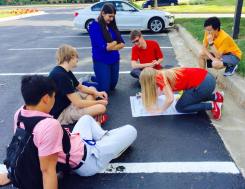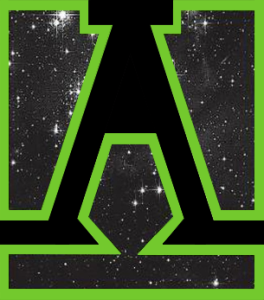For build season to run smoothly there are a lot of behind the scenes training and support involved. There are a lot of tasks to get done, so team organization is very important to delegate tasks.
Training

The Leadership Academy – This is a summer training that takes place once a week. Students create the fall training lessons for the newcomers and learn how to effectively lead and interact with others on the team.
Fall Training – Even though the fall is during off season, we use every bit of the time we get to train the newcomers to the team. We train them on subjects such as electrical, how to use a drill, or write some code. Last fall, we were lucky enough to have Akele Knecht come and present to us about women in STEM. This time is also used to raise money through sponsorships and fundraisers.
Support
Alumni College Meeting – This past fall we were able to invite some alumni to some meetings to talk to juniors, seniors, and anyone interested about what to expect in college.
Alumni Mentorship – Particularly during the build season, we have some recent graduates come back to the team to take part in a different way by mentoring their former classmates. It’s a lot of fun for the alumni to be on the other side of the glass, and it’s pretty cool for the alumni and students to see their old friends.
Team Organization
The team is organized into 3 disciplines: Mechanical, Operations, and Control Systems (Software and Electrical).
Mechanical focuses on the physical manifestation of the robot. The individual mechanisms and such. They look into the possible designs for each mechanism and collaborate with Control Systems to make the robot functional and successful.
Business Development is the team that handles funding and outreach. They reach out to sponsors and potential sponsors. They take care of the website, Facebook, YouTube, and all the team’s other mediums of social media.
Control Systems encompasses both electrical and software, both of which were previously separate disciplines on the team. It is their job to work on sensors, autonomous code, wiring of the robot, and many other important parts of the robot.
The general idea is that a student can choose between the three disciplines or be a member of more than one (although it can be difficult to balance two). Even though the team is broken into three separate sections, the teams must all work together to build a successful robot and have a successful season. Also, there are other teams that span the three disciplines.
Systems is an example of one of those extra teams and, arguably, one of the most important. They are responsible for facilitating communication and coordinating between sub-teams. One of their jurisdictions is space allocation on the robot. Space allocation refers to the amount of room each mechanism is allowed to take up on the robot. Some other extra teams are strategy and scouting.
Last year, our team was arranged in a hierarchy format with the team captain at the top. Although we mostly did away with last year’s system, we do have a group of people who help coordinate the team.
The Council is a group of five Seniors who work to oversee interactions between sub-teams and disciplines. They also manage decisions that affect the entire team, such as executive training decisions.
Last, but certainly not least:

The Mentors are adults that volunteer to be present during team meetings. They are always there for students as resources whenever assistance is needed. Without our mentors, we would not be able to make robots. We are a student-led, mentor-enabled team.
